Bookmatching Marble Is the Technique That All Designers Swear by for Elevated Kitchens
This design technique can instantly transform any kitchen into the highlight of your home, we asked our experts to explain why
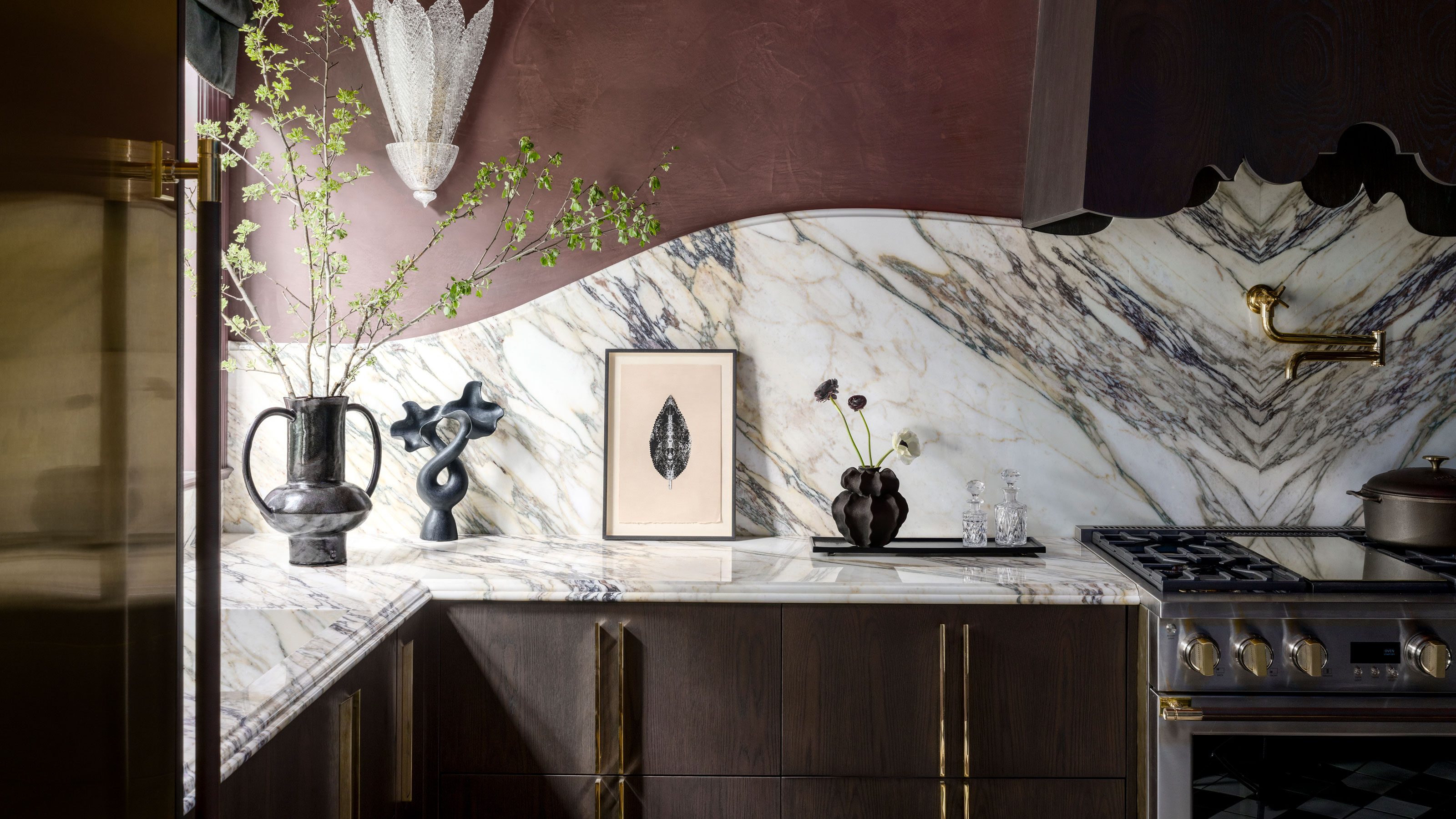
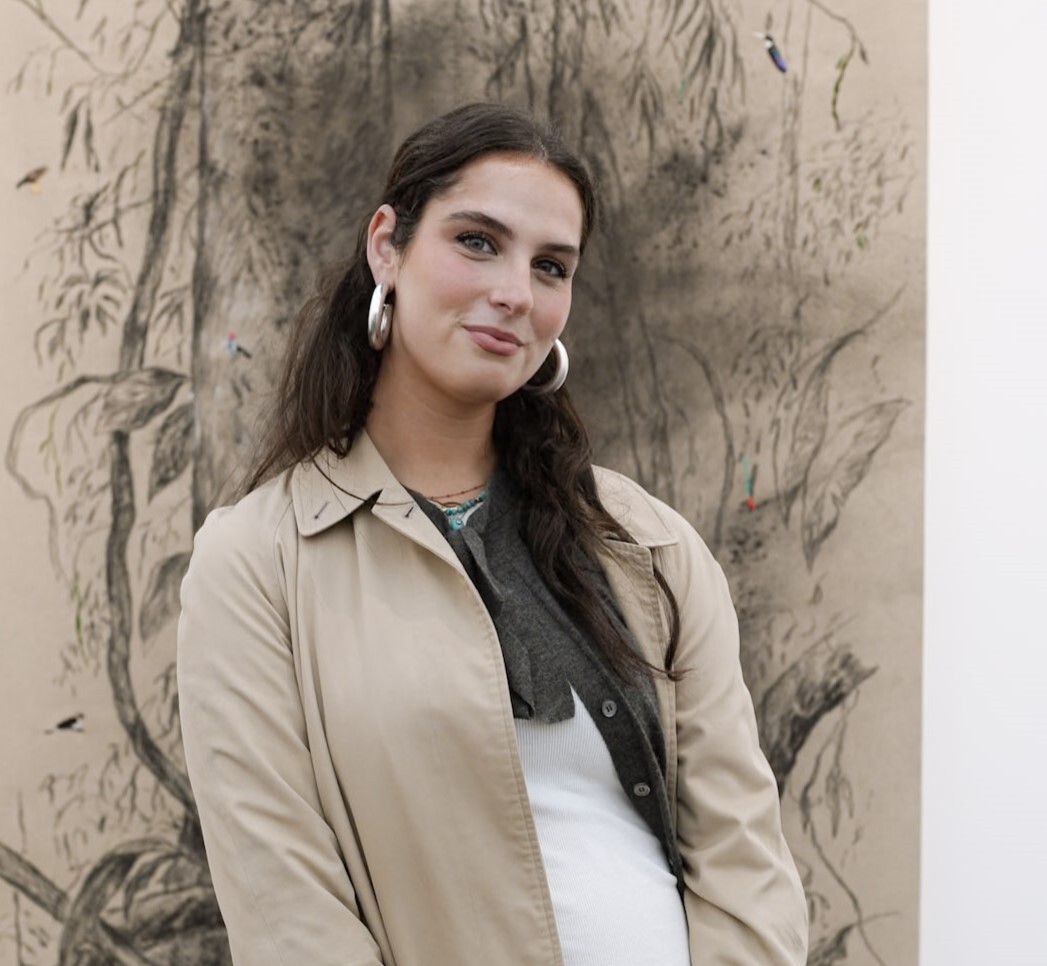
Throughout history, marble has remained perhaps the most consistently revered material. Just as we marvel over a stunning Calacatta slab worktop, ancient civilizations from across the world were equally enthralled by the ethereal qualities of this natural beauty. And while marble has become quite popular, so has bookmatching marble — which helps create unique patterns in the finest form.
While our love and appreciation for the stone is clearly nothing new, the ways in which we use it have changed drastically over time. And for all the beauty there is to be found in the surviving wonders from these fallen civilizations, with our constant obsession with marble kitchens, we have certainly discovered our own ways to celebrate this fabric. Sure, we may not be carving the Venus de Milo, but take one look at these perfectly aligned marble slabs and try to tell me that’s not a sight to be revered in its own right.
Bookmatching marble often creates a crisp, seamlessly lined-up style, and it's the technique designers use to give any bathroom or kitchen the most supremely elegant, luxurious feel. It's often seen on a kitchen backsplash, but also on countertops, and in bathrooms. We’ve asked some of our favorite designers and stone experts to give us a complete guide on the technique and all the dos and don'ts for getting the best look possible.
What Is Bookmatching?
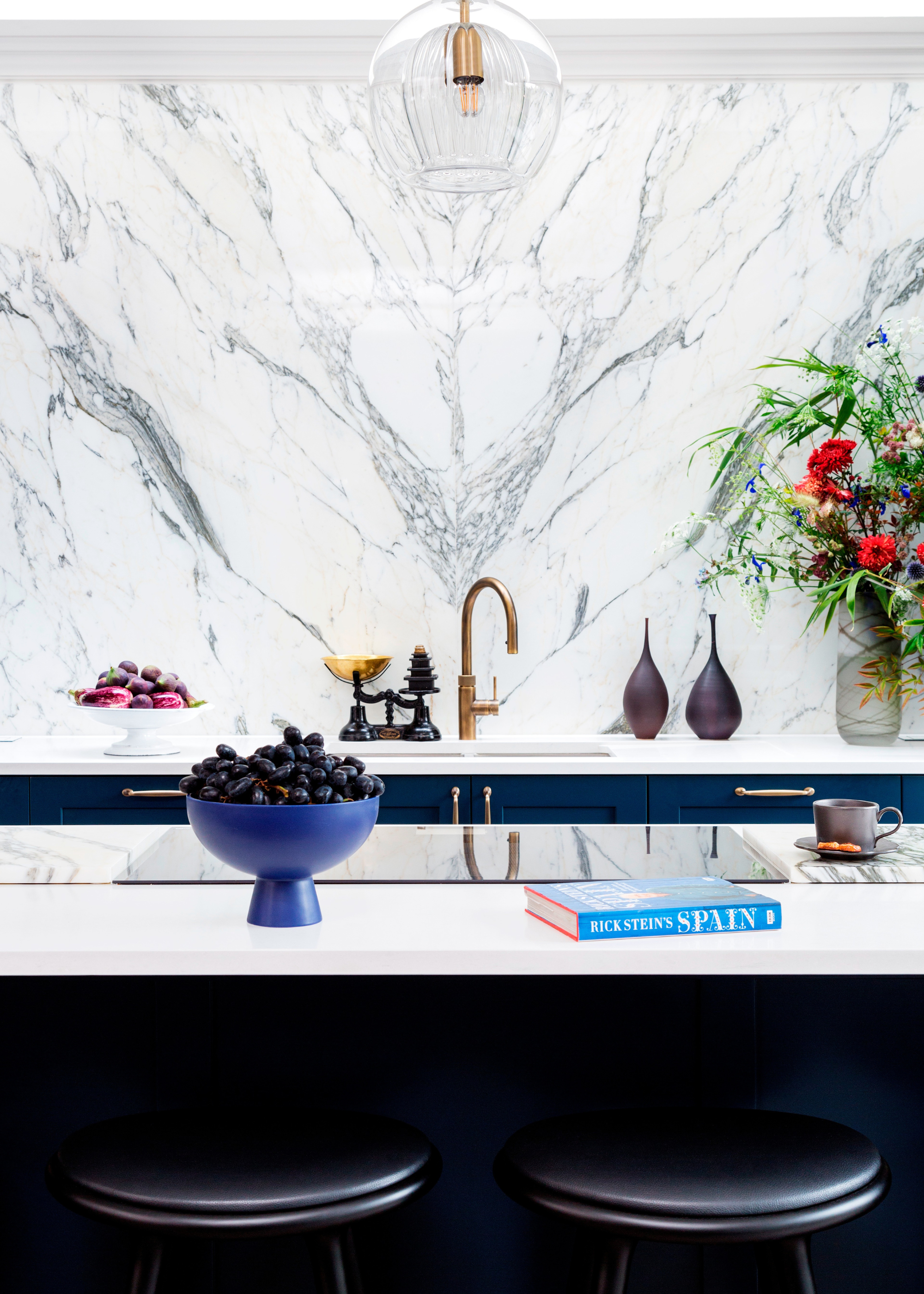
Bookmatching gets its name for its similarity to an open book.
Even if you're well acquainted with all the most fashionable modern kitchen ideas, this technique could teach you a thing or two about how to achieve the most elevated finish. Getting its name from its visual similarity to the symmetry seen in an open book, this technique offers an elegant and modern finish.
"Bookmatching is a technique where two adjoining slabs of marble are cut in a way that creates a mirror image, similar to the pages of an open book," explains Ella Small, director at Mandarin Stone. "This effect is achieved by slicing a marble block into thin slabs and then placing them side by side with their corresponding surfaces facing each other." While this is most commonly done in the way Ella describes, you can also achieve this look using large format tiles, as opposed to multiple slabs of the same marble.
The goal is always creating the illusion of unbroken continuation, which looks particularly effective with a dramatically veined marble surface.
Mandarin Stone was founded over 30 years ago, by Alma Small. Alma was inspired by her love, and fascination for natural stone, a passion that remains at the heart of the business. A true family business, Alma's daughter, Ella, runs the shop as the company's director of operations. She is joined by her two other siblings, who both work for the family business. Today, Mandarin Stone are considered one of the leading stone suppliers in the UK, helping to create some of the most striking kitchens and bathrooms in the country.
What Materials Can I Use for Bookmatching?
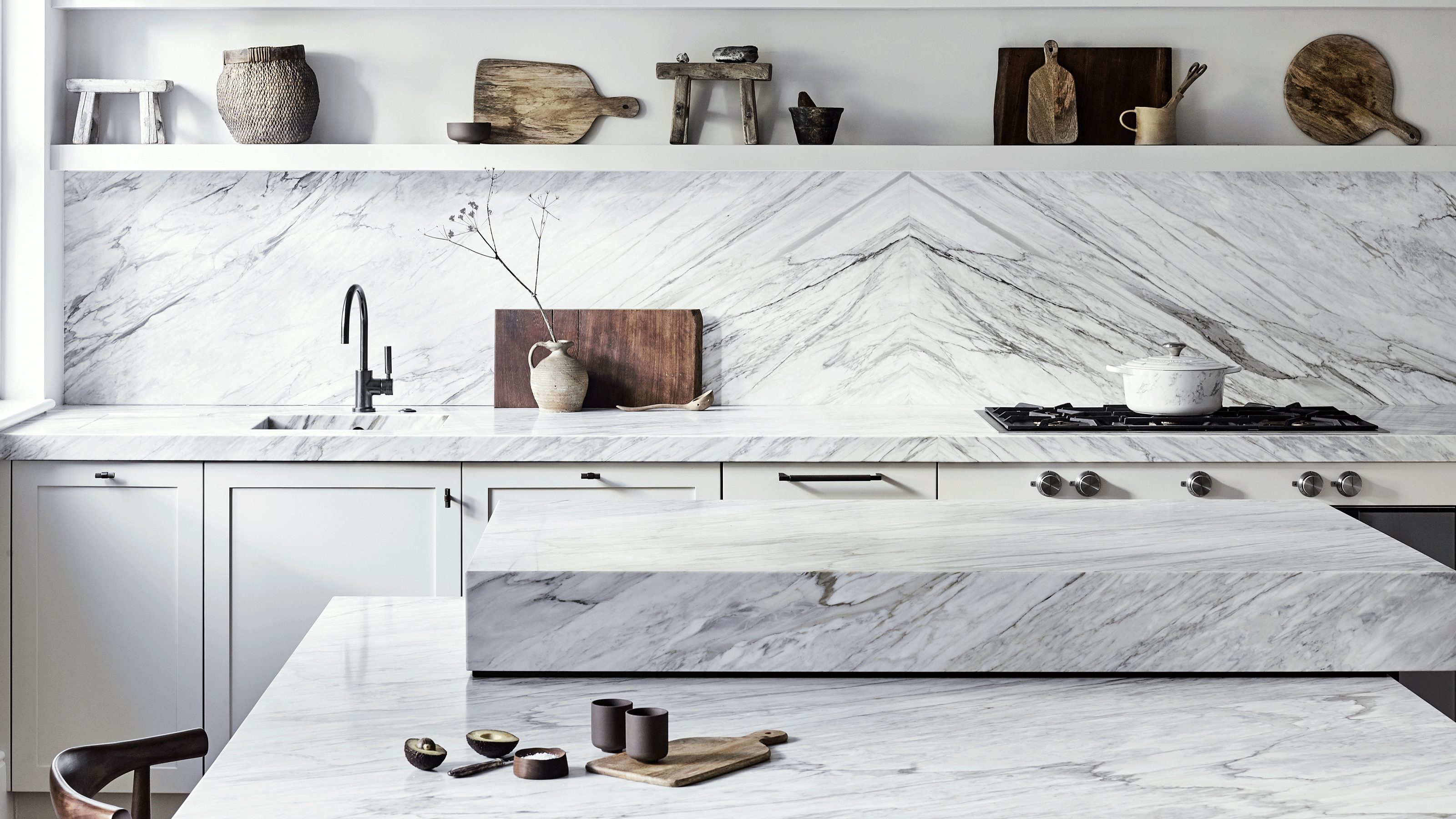
This Roundhouse kitchen sees bookmatching used on the backsplash and countertop.
Although marble is by far the most popular stone to use for this technique, that does not mean it is not possible with other materials.
Felix Milns, from HUX London explains: "This aesthetic works particularly well with natural materials such as stone and marble, as it highlights the unique beauty of their natural patterns and markings. It also works well with veneers where thin slices are cut and arranged symmetrically to give the same effect, highlighting the natural grain and patterns of the wood."
Veneer has become an increasingly popular material to use for bookmatching, as the swirling patterns and details can make for an effective design finish, plus, it's a great way to get involved with the decorative veneer trend. "The bookmatching trend is most commonly associated with natural stones. The most popular choice due to its dramatic veining is marble, e.g., Calacatta, Statuario, Arabescato," explains Ella.
However, for all the obvious beauty of these materials, there is a hefty price tag that follows. Luckily, innovations in design have allowed us to achieve the same effect on a tighter budget.
"High-resolution printing technology has allowed porcelain to mimic natural stone whilst also generally being thinner and less heavy for installation. Durable porcelain has become a popular bookmatching choice with no sealing required," Ella says. Porcelain is, therefore, an ideal option for projects on a more moderate budget, plus the less strenuous installation process further lowers the costs.
Having begun his career as a travel journalist, Felix has a strong understanding on the finest of luxury designs.
Over the course of 25 years, Felix has continued to develop this understanding, and now shares his knowledge with other through his joinery company, HUX London.
HUX London specialises in bespoke, luxury kitchens and joinery, creating strikingly stunning designs catered to his clients tastes and desires.
Where Should I Use This Technique?
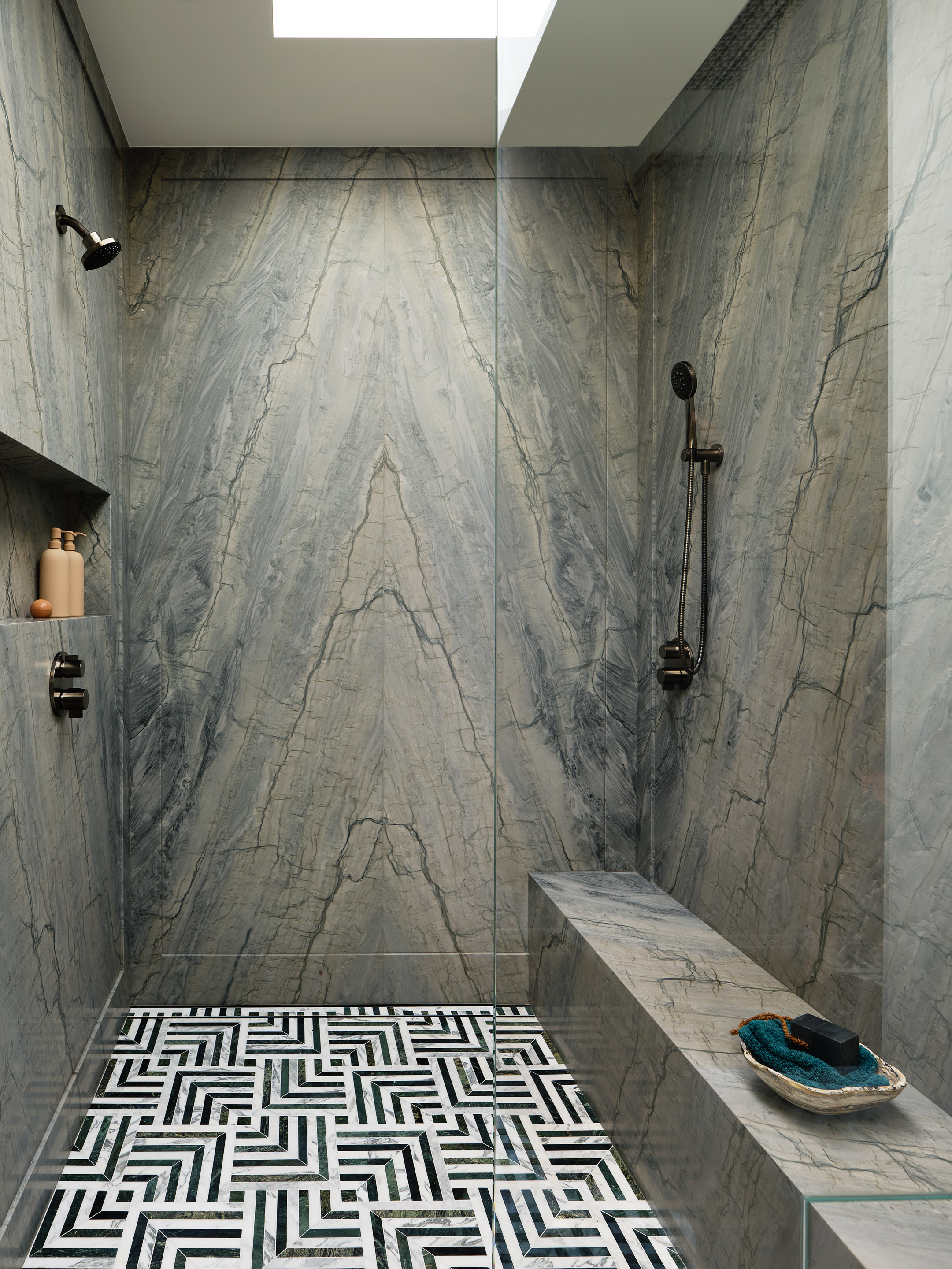
Bookmatching is perfect for somewhere like a shower wall.
Due to the materials needed, it is most common to see this technique used in bathrooms or kitchens, where you can find larger, uninterrupted spaces to dedicate to a singular material. "The effect can be used in modern kitchens to create a dynamic look," explains Paul Welburn, senior designer at Roundhouse. "It is often used in backsplashes with marble and on islands to create the ‘waterfall’ effect."
This 'waterfall' effect Paul references is the result of the curving, fluid lines found in natural materials like marble. This effect can make a stunning feature in larger, spa bathrooms, where the fluidity of the marble complements the relaxing aura of the space.
Paul also mentions that this style works best when there is a 'longer run' available. As this technique requires multiple slabs of marble, it can easily overwhelm smaller spaces, making a room feel suffocating rather than striking.
As Ella explains, "Generally, you'll need a larger space to allow the slabs to have maximum impact and to ensure that the feature veining does not overwhelm the rest of your interior."
What Style Kitchen Does This Look Suit?
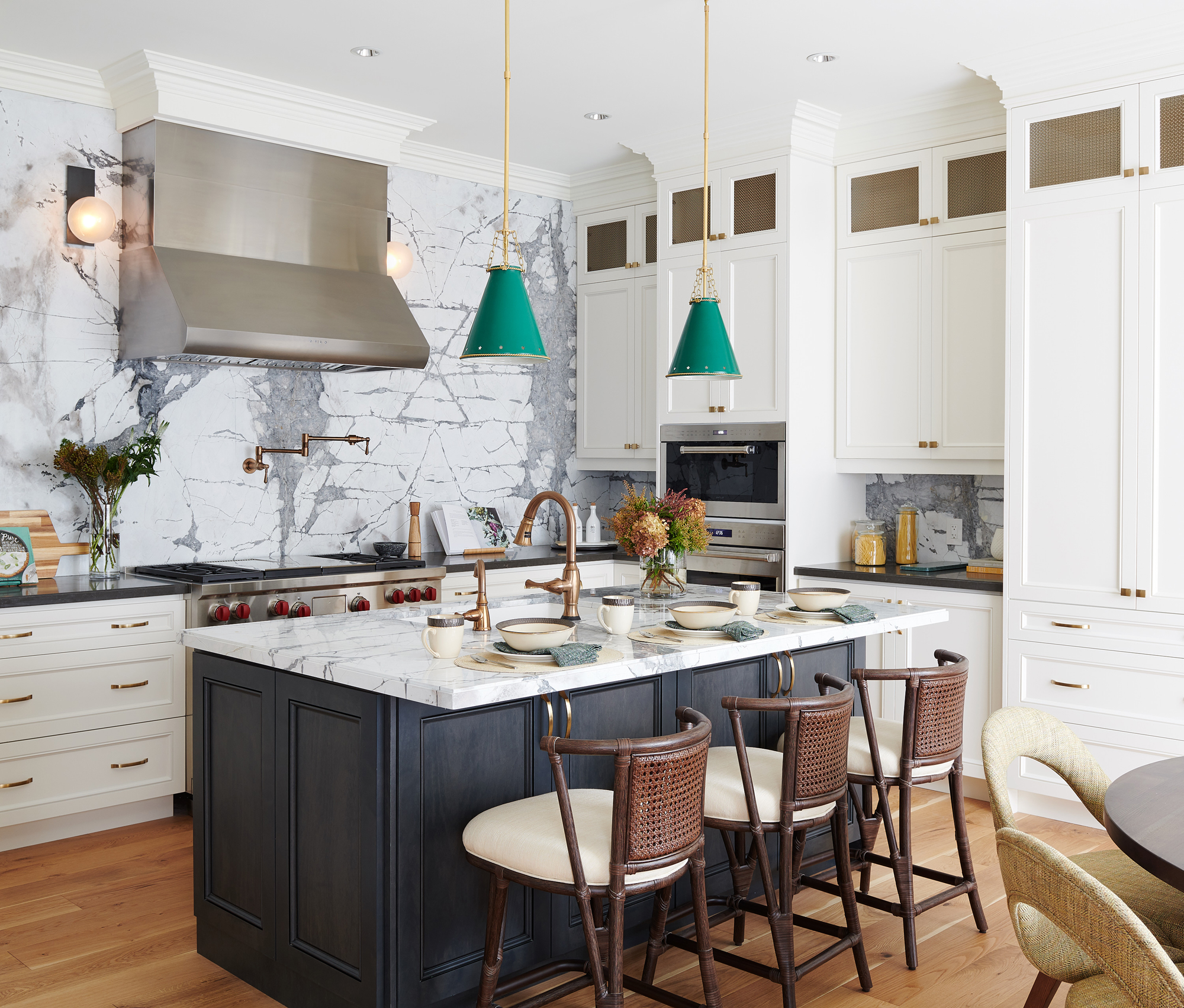
Often, bookmatching is centered on a backsplash, but this design sees it offset for a unique look.
A finish as dramatic and striking as this one is not equally suited to all design aesthetics, while it can offer an elegant and luxurious feel, this can easily look out of place when paired with contrasting finishes.
"Bookmatching is ideal for creating a contemporary, luxurious aesthetic," says Felix. "It adds drama to a more neutral kitchen by highlighting the intricate details of the stone, bringing depth and visual weight."
Choosing relaxing kitchen colors that complement the natural tones of the stone to decorate the rest of your kitchen can help to create this level of depth.
"It’s particularly effective in minimal, modern kitchens, where the clean lines and simplicity allow the bookmatched material to take centre stage and become the focal point of the space," Felix continues. "Overall, the precise, refined look it offers is best suited to high-spec, bespoke kitchens, where the same level of attention to detail and craftsmanship is evident throughout the entire room."
With such a dramatic look, it can be useful to think of bookmarking as the standout feature in your kitchen, letting other elements support the design, as opposed to battling it for attention.
"Let the bookmatching lead your style," says Ella. "Work with the natural shades within the slabs picking this out throughout your interior.
"Bookmatching offers a sophisticated elegance and is best suited to interiors where an elevated, organic, and unique aesthetic is desired. Use it in highly visible areas where it will be appreciated and transition through the years," she continues.
When Should You Not Use Bookmatching?
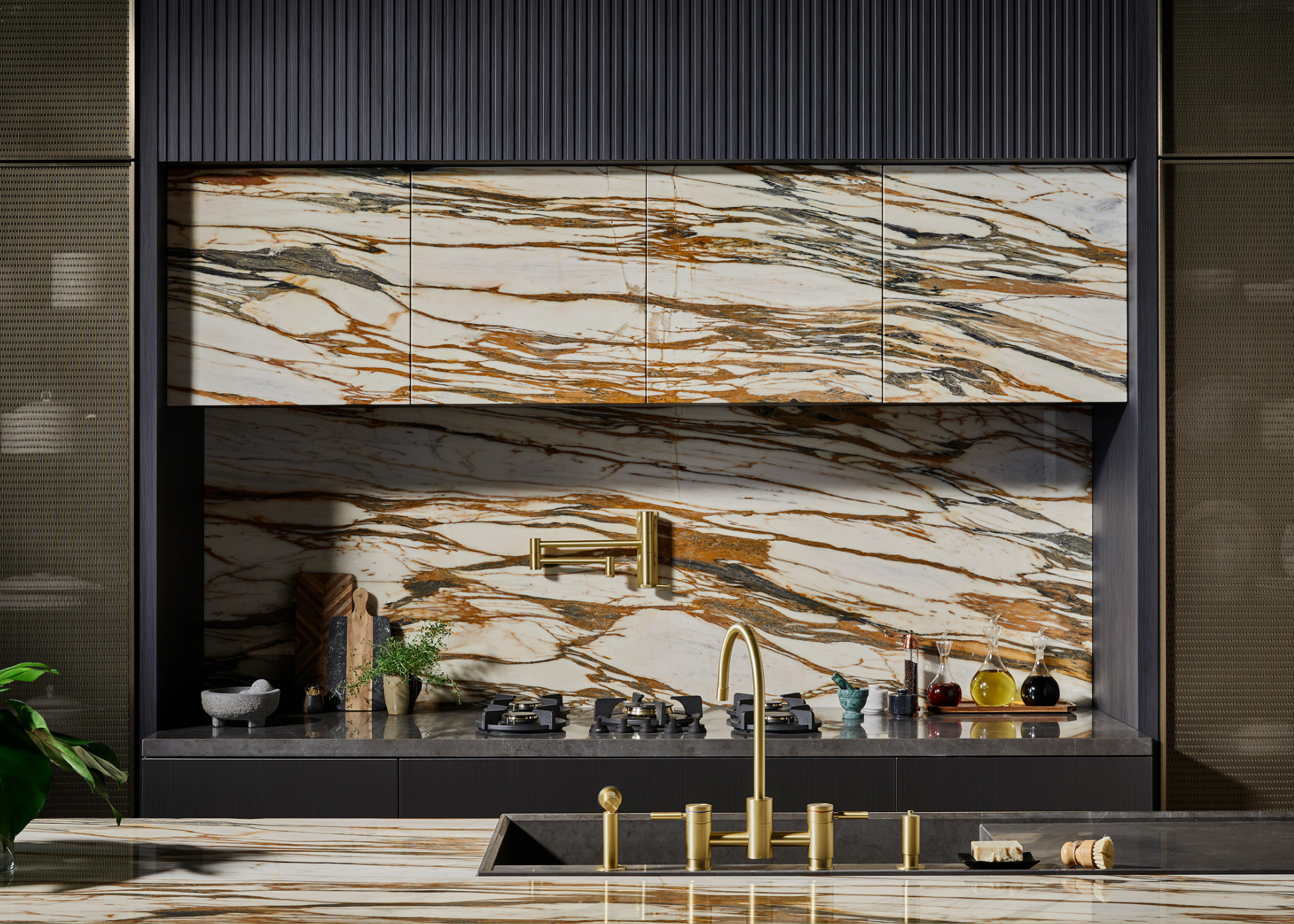
Bookmatching isn't always necessary if you're working within the size of a whole slab anyway.
So, are there any place where bookmarking should be absolutely avoided? Well, yes, according to our experts.
"Bookmatching is a striking way to make a design statement and works best in spaces that are large enough to fully appreciate its bold, symmetrical patterns. It may not have the same impact in narrow or galley-style kitchens, where the visual space is limited," explains Felix. "Additionally, if your kitchen already features a lot of decorative elements or patterns, the bookmatched design might feel out of place or be rather overlooked."
The most important factor to consider is the amount of space you have available. This look simply cannot reach its fullest potential when squashed, or cramped in to small spaces, making it an issue if you're on the search for small kitchen ideas.
Now you know all about this stunning finish, perhaps it's time to do some research in to your material of choice. If marble is out of the budget, there are plenty of marble alternatives to use instead, or why not experiment with more unusual kitchen materials?
Be The First To Know
The Livingetc newsletters are your inside source for what’s shaping interiors now - and what’s next. Discover trend forecasts, smart style ideas, and curated shopping inspiration that brings design to life. Subscribe today and stay ahead of the curve.

Maya Glantz is a Design Writer at Livingetc, covering all things bathrooms and kitchens. Her background in Art History informed her love of the aesthetic world, and she believes in the importance of finding beauty in the everyday. She recently graduated from City University with a Masters Degree in Magazine Journalism, during which she gained experience writing for various publications, including the Evening Standard. A lover of mid-century style, she can be found endlessly adding to her dream home Pinterest board.
-
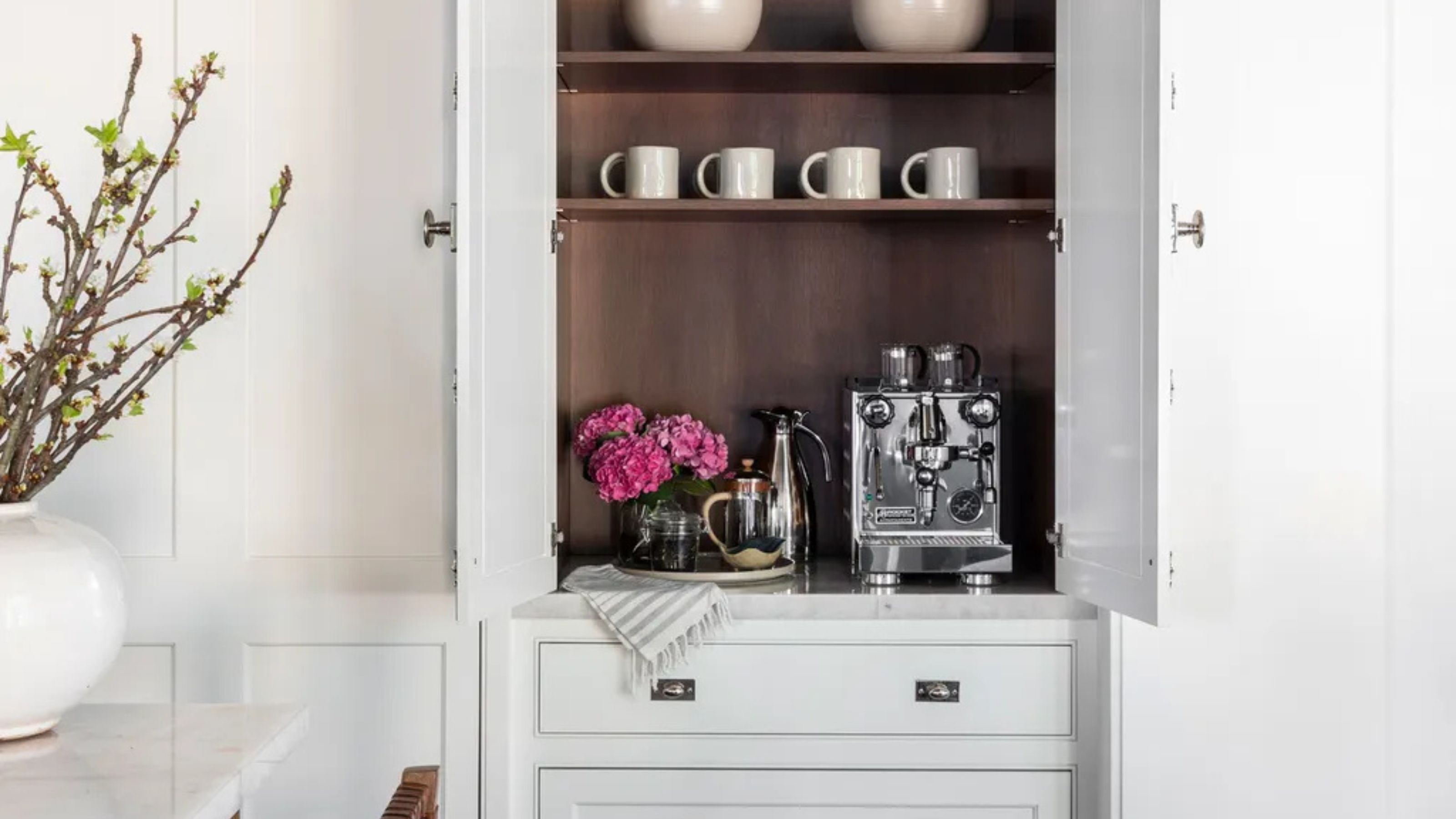 Turns Out the Coolest New Café is Actually In Your Kitchen — Here's How to Steal the Style of TikTok's Latest Trend
Turns Out the Coolest New Café is Actually In Your Kitchen — Here's How to Steal the Style of TikTok's Latest TrendGoodbye, over-priced lattes. Hello, home-brewed coffee with friends. TikTok's 'Home Cafe' trend brings stylish cafe culture into the comfort of your own home
By Devin Toolen Published
-
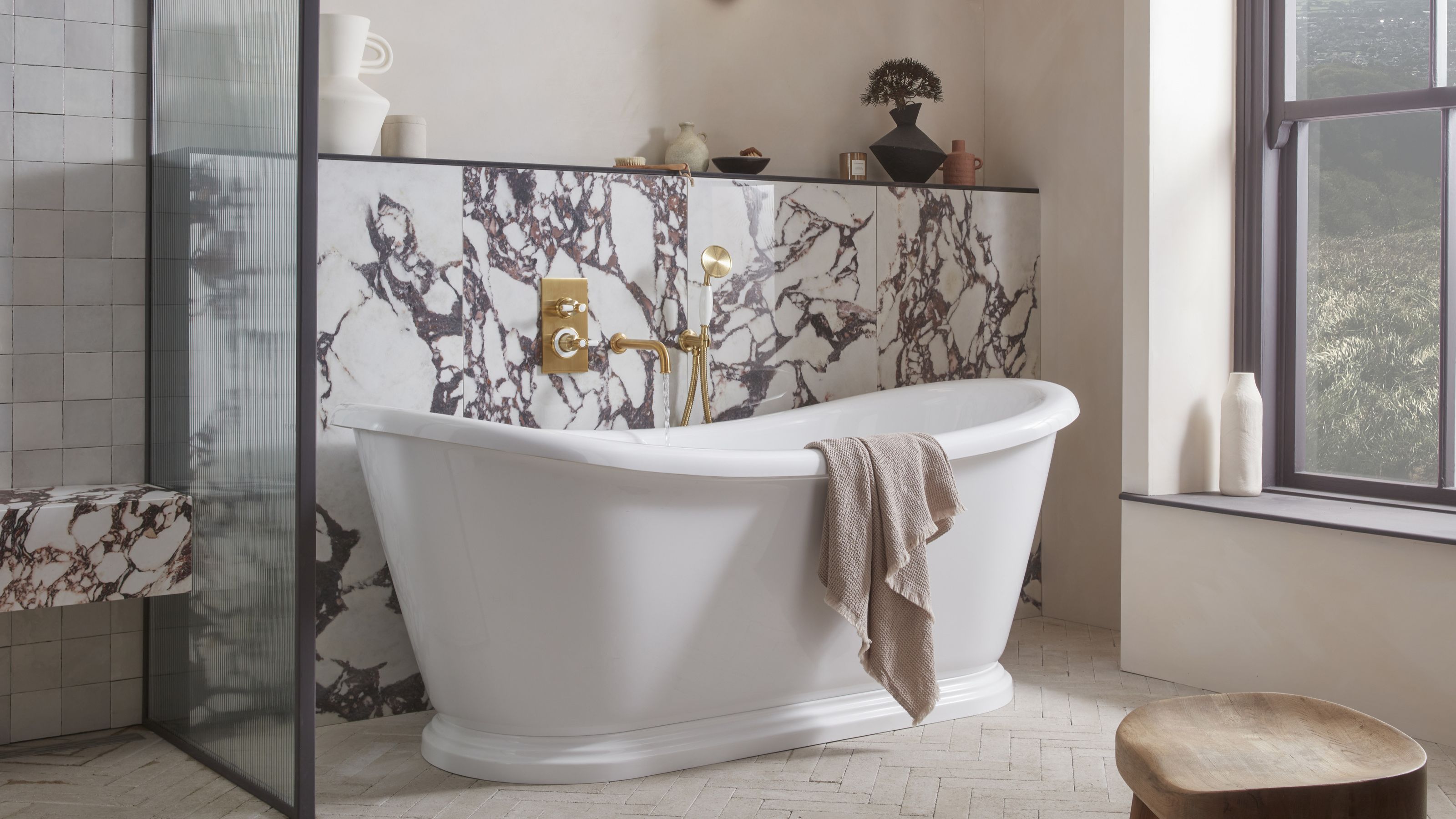 5 Bathroom Layouts That Look Dated in 2025 — Plus the Alternatives Designers Use Instead for a More Contemporary Space
5 Bathroom Layouts That Look Dated in 2025 — Plus the Alternatives Designers Use Instead for a More Contemporary SpaceFor a bathroom that feels in line with the times, avoid these layouts and be more intentional with the placement and positioning of your features and fixtures
By Lilith Hudson Published
-
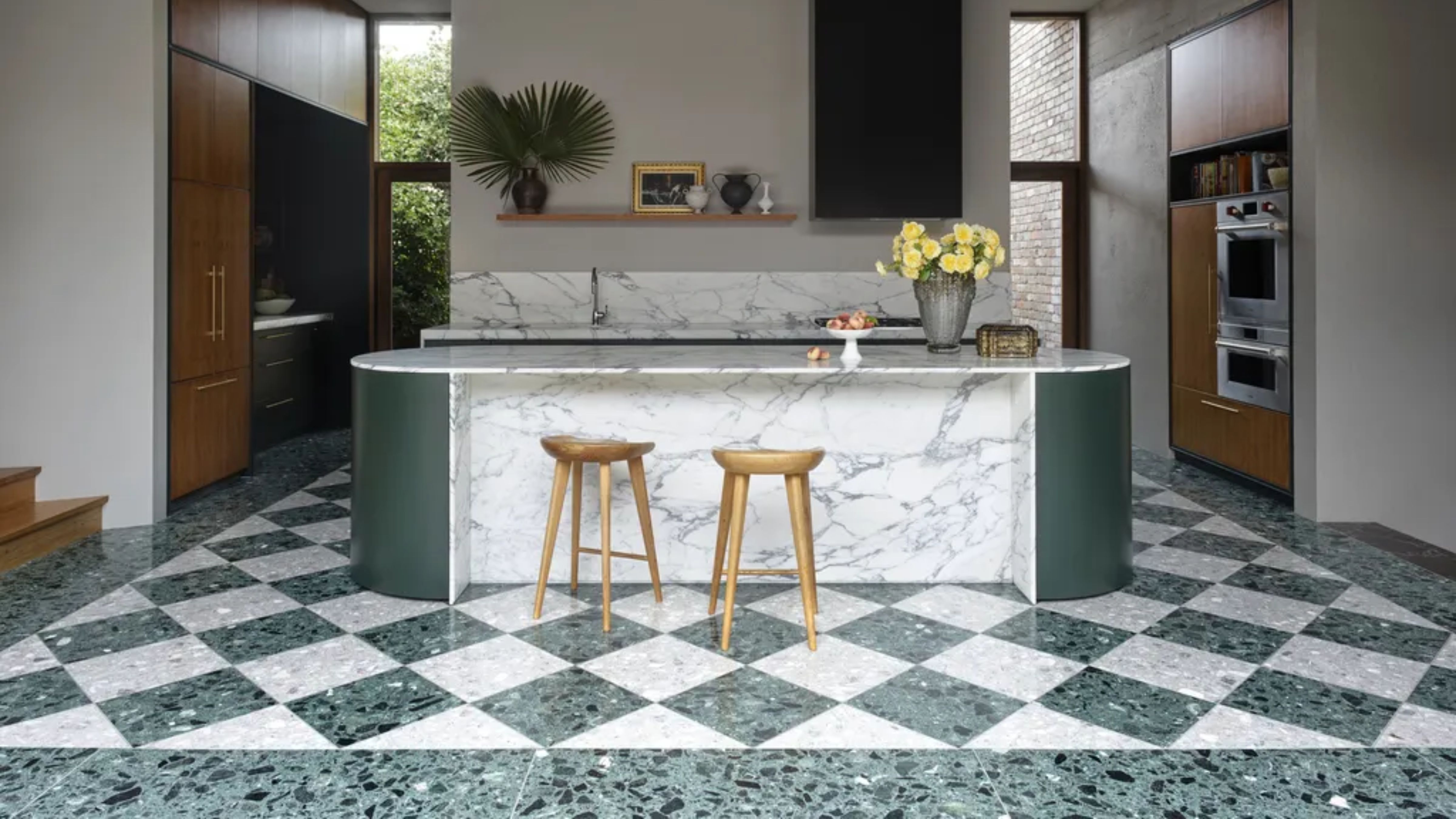 Smeg Says Teal, and We’re Listening — The Kitchen Shade of the Year Is Here
Smeg Says Teal, and We’re Listening — The Kitchen Shade of the Year Is HereDesigners are already using the soft, sea-glass green everywhere from cabinetry to countertops
By Julia Demer Published
-
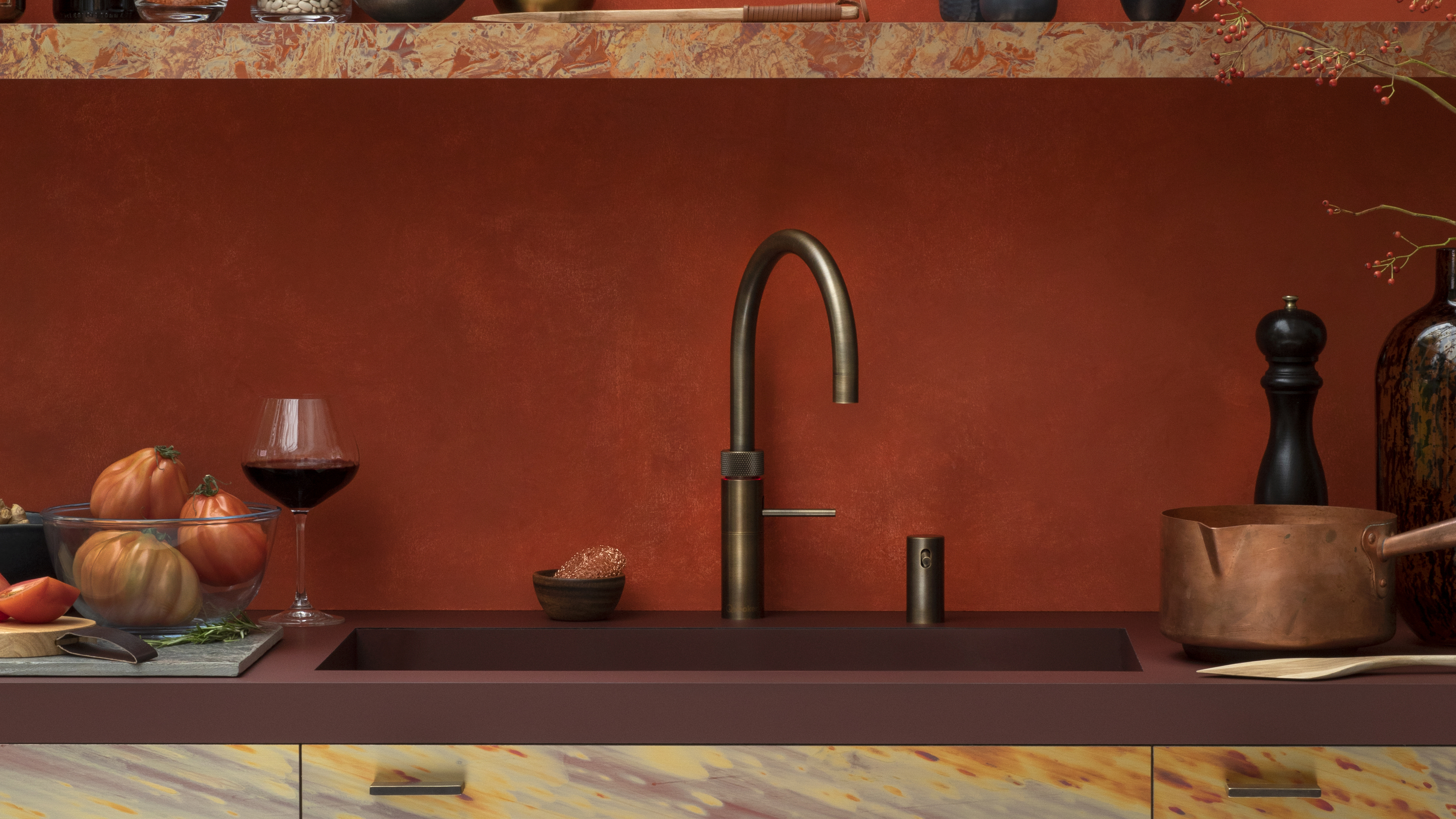 5 Problems With Boiling Water Taps That No One Ever Talks About — And How to Troubleshoot Them
5 Problems With Boiling Water Taps That No One Ever Talks About — And How to Troubleshoot ThemWe got our experts to spill the beans on the truth behind these kitchen staples
By Maya Glantz Published
-
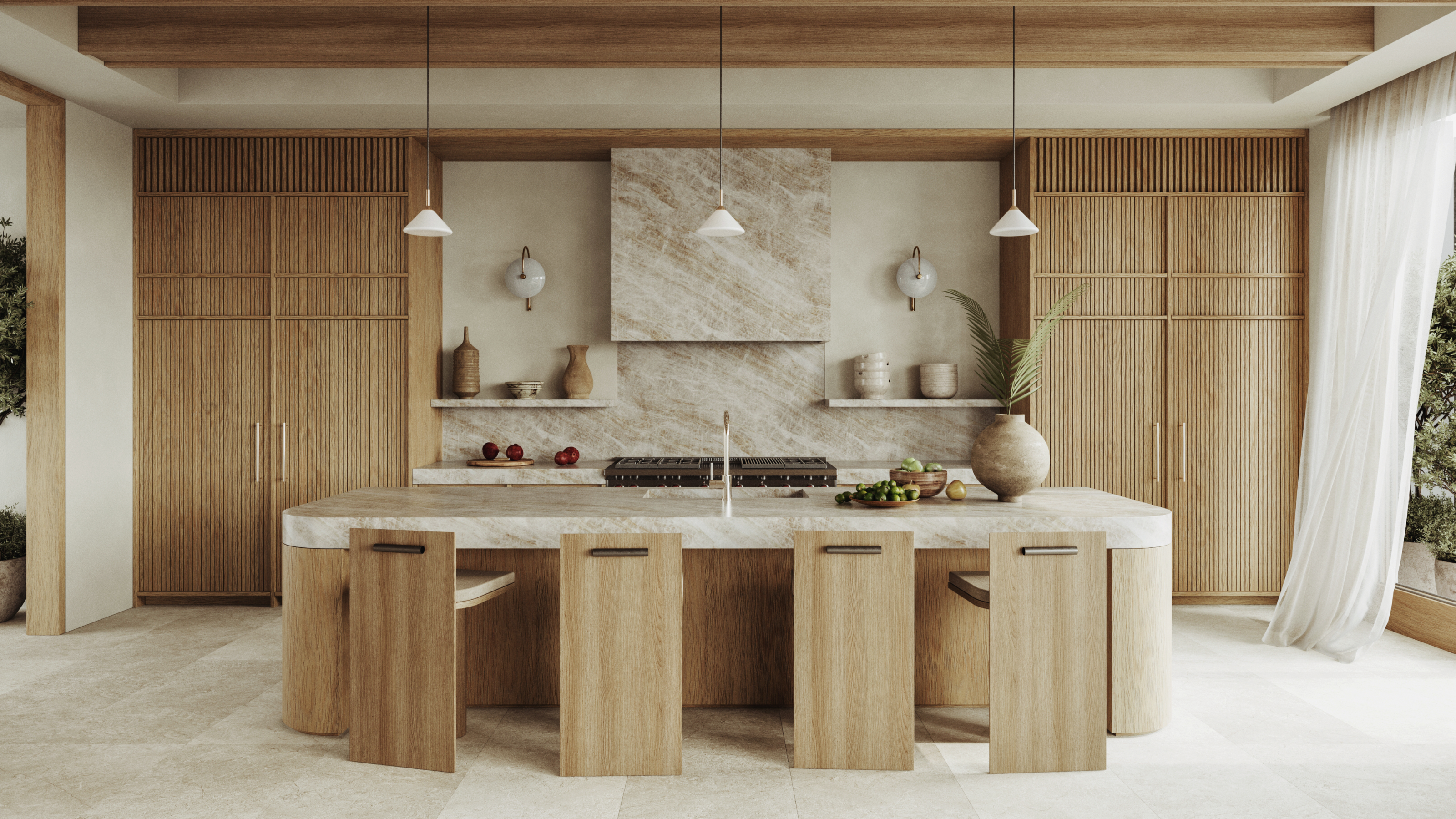 Does a Kitchen Need to Have a Door? The Pros and Cons (and Regulations) Explained
Does a Kitchen Need to Have a Door? The Pros and Cons (and Regulations) ExplainedAs popular as open-plan kitchens may be, they aren't for everyone. Our experts break down all the pros and cons of this design style.
By Maya Glantz Published
-
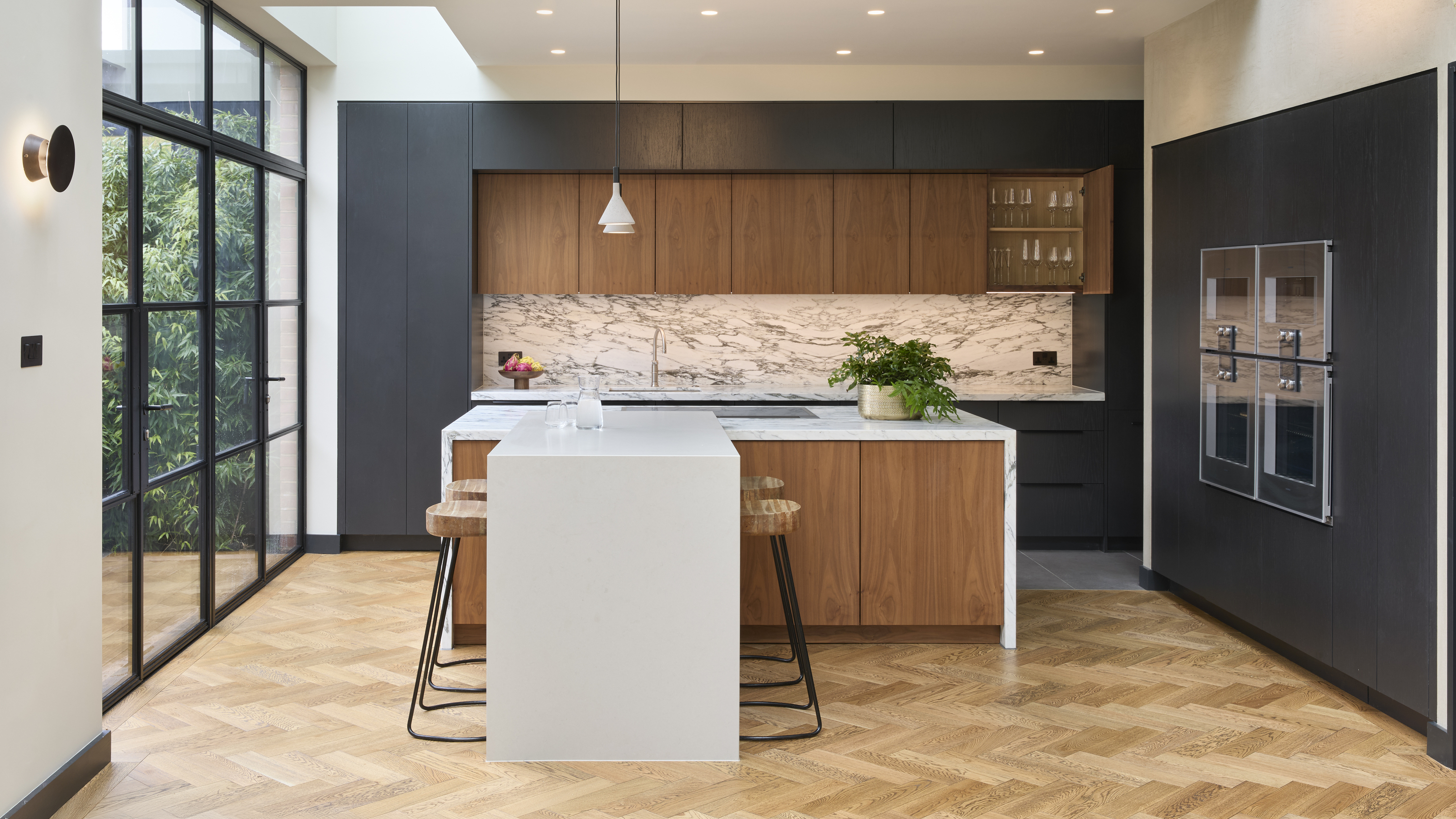 5 Kitchen Layouts That Are Dated in 2025 — Plus the Contemporary Blueprints Designers Are Choosing Instead
5 Kitchen Layouts That Are Dated in 2025 — Plus the Contemporary Blueprints Designers Are Choosing InsteadIf you want to design a kitchen with a coherent floorplan conducive to better flow and functionality, these are the layouts to steer clear of
By Lilith Hudson Published
-
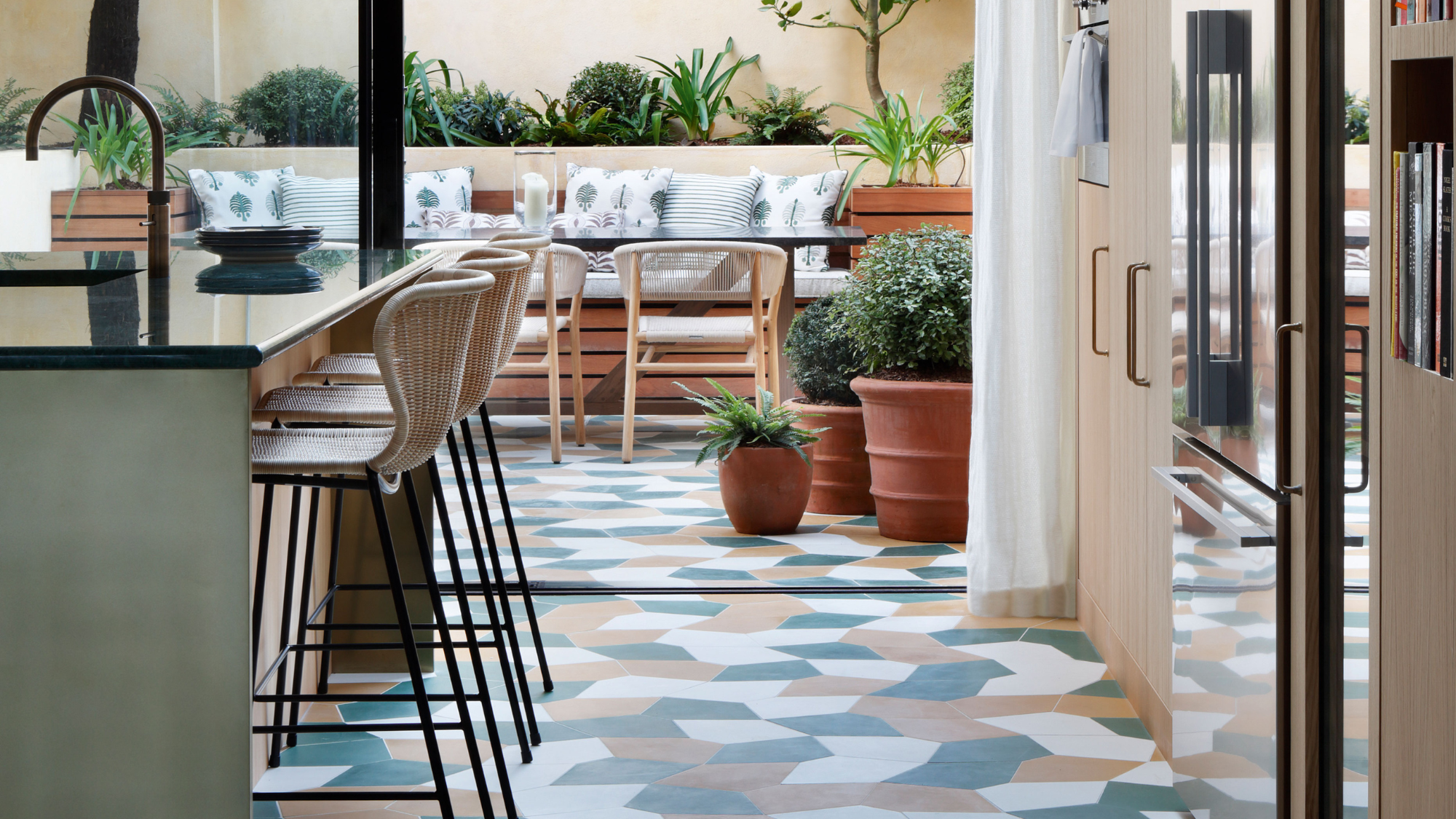 11 Kitchen Flooring Ideas to Build a Brilliant Renovation Scheme From the Ground Up
11 Kitchen Flooring Ideas to Build a Brilliant Renovation Scheme From the Ground UpStarting with your kitchen's flooring isn't a bad idea when it comes to creating a successful scheme — here are 11 modern ways to do it, and expert advice from interior designers
By Tessa Pearson Published
-
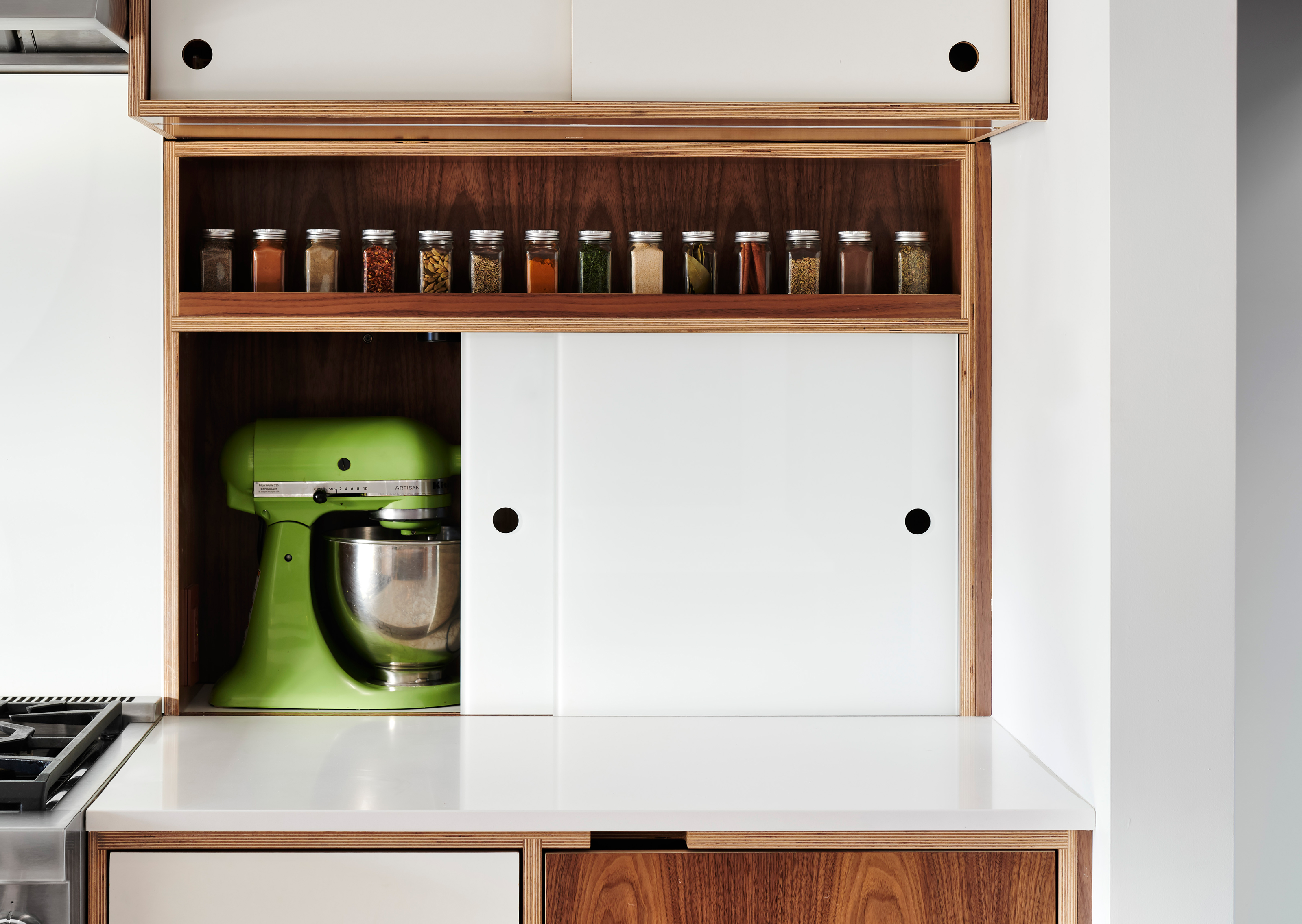 "I Just Bought a Stand Mixer — Where Can I Store It in My Small Kitchen?" 6 Clever Storage Ideas to Consider
"I Just Bought a Stand Mixer — Where Can I Store It in My Small Kitchen?" 6 Clever Storage Ideas to ConsiderLove your stand mixer, but hate not knowing how to store it? We've got the same problem, but these six expert tips have solved our limited storage problems for good.
By Amiya Baratan Published
-
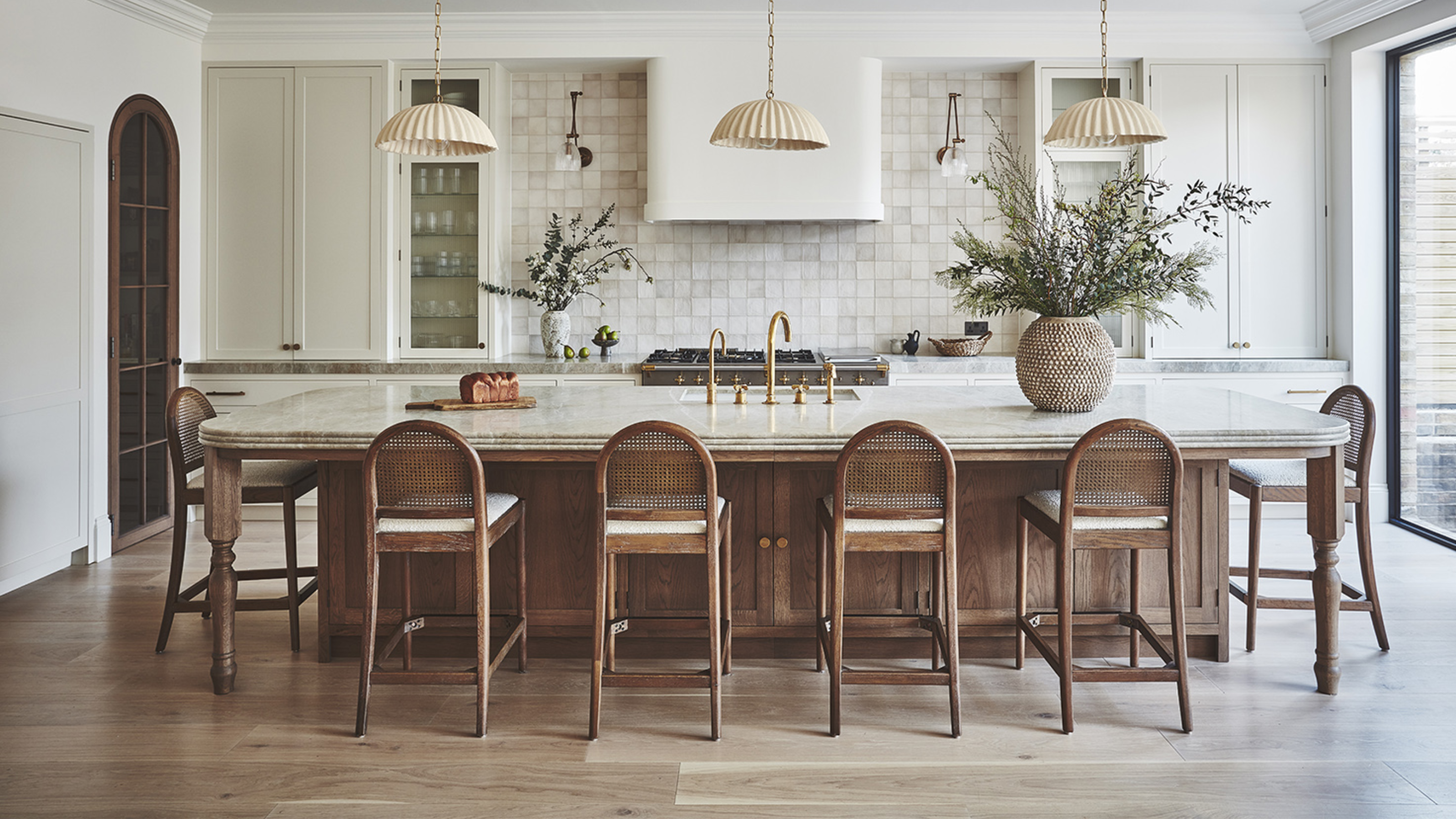 Bar Stools vs Counter Stools — The Difference You Need to Know to Avoid Buying the Wrong One for Your Kitchen
Bar Stools vs Counter Stools — The Difference You Need to Know to Avoid Buying the Wrong One for Your KitchenYou might think they're the same thing, but bar stools and counter stools are subtly different, and knowing how will help you avoid buying the wrong ones
By Maya Glantz Published
-
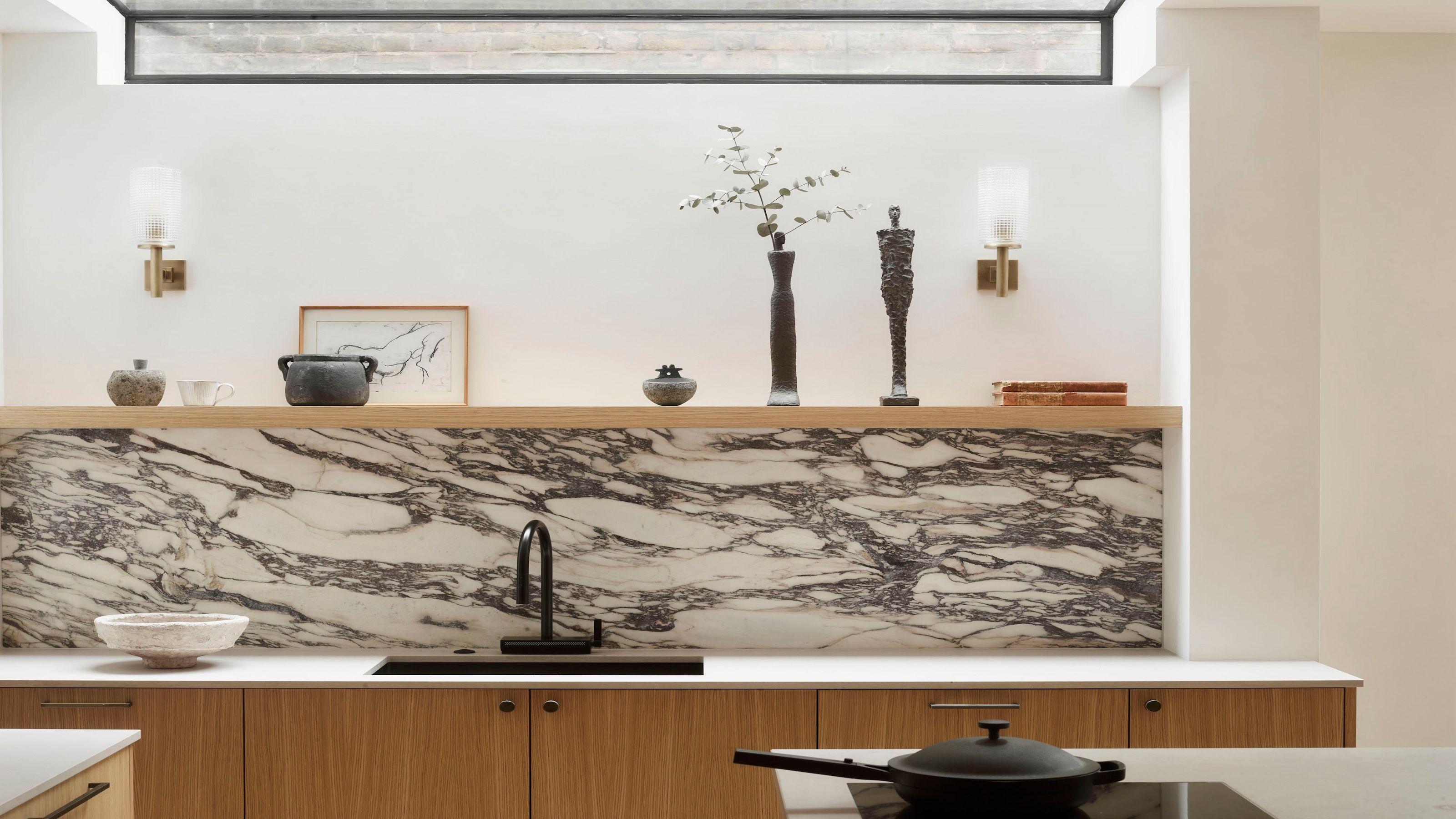 10 Kitchen Tap Ideas That Will Upgrade Your Sink — Who'd Have Thought Doing the Dishes Could Look This Good?
10 Kitchen Tap Ideas That Will Upgrade Your Sink — Who'd Have Thought Doing the Dishes Could Look This Good?From pot fillers to pull-out hoses, these are the kitchen taps that the experts are lusting over right now…
By Lara Sargent Published